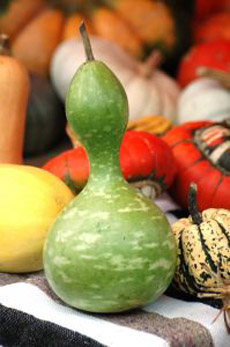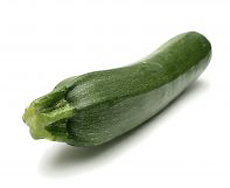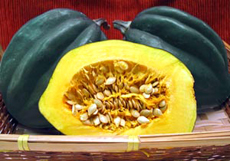OverviewAmid the melting pot and hodgepodge of cuisines in the U.S., sometimes you have to wonder, “What is American food?” While Rice Krispies treats and the peanut butter and jelly sandwich are uniquely American recipes, squash is something natively grown in the Americas. The word “squash” is derived from “askutasquash,” which literally means “a green thing eaten raw” in the language of the Nahahiganseck Sovereign Nation, the native Americans who controlled the area surrounding Narragansett Bay in present-day Rhode Island, portions of Connecticut and eastern Massachusetts. The squash is versatile. While some require cooking, others, like zucchini, can be prepared in every conceivable way: raw, sautéed, grilled, steamed, boiled, broiled, baked, fried, microwaved or freeze-dried. Easily puréed for soups, cakes, pies and quick breads, it also can be spiced and added to rice pilafs, cubed and grilled on skewers, added to stews and made into famous dishes like ratatouille and pumpkin pie. Served alone or as an side dish, the diverse flavors of squash lend itself to any occasion. Before we go further, let us spring the surprise that although we’ve put this article in our Vegetables Section, squash and gourds are actually fruits! Because they aren’t sweet, they are typically used as vegetables. But by botanical definition, fruits have their seeds on the inside. Squash are fruit, like tomatoes. Squash can be a caloric bargain with a nutritional bonus.
Buying and Storing SquashThe terms “summer” and “winter” squash only loosely refer to when the squash is harvested—most are available year-round. The terms more accurately group the squash by durability.
Squash Tips
Continue To Part II: Cooking With Squash
Lifestyle Direct, Inc. All rights reserved. Images are the copyright of their respective owners.
|

The Nibble Blog
The Latest Products, Recipes & Trends In Specialty Foods
The gourmet guide you’ve been waiting for. New food adventures are served up daily. Check it out!

Food Glossary
Our Food Directories Are "Crash Courses" In Tasty Topics
Your ultimate food lover’s dictionary packed full of information and historical references. Take a look!

Food History
Let the journey begin!
Learn about the history Of 1,000+ Favorite Foods & Beverages Let’s explore the history of your favorie goods together.Let the journey begin!



